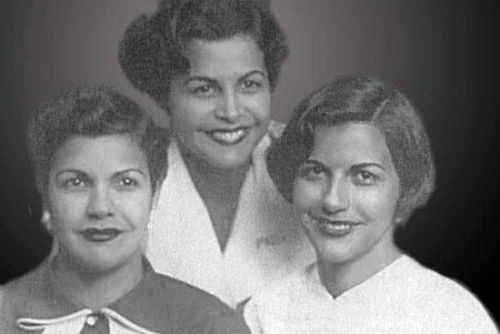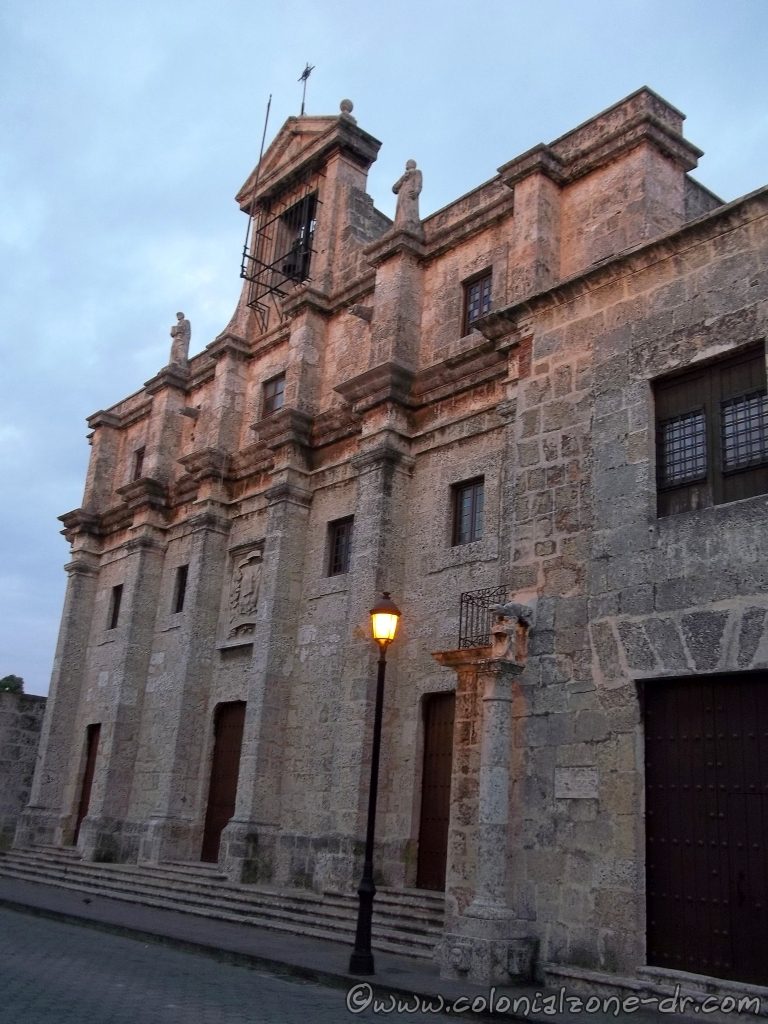Las Hermanas Mirabal/ The Mirabal Sisters
The Hermanas Mirabal are 3 women who followed their convictions with bravery and selflessness to fight for what they believed. Fighting against the Dominican Republic dictators’ rule they felt was wrong. Three of them – Patria, Minerva, and Maria Teresa – gave their lives for their cause when some henchmen, following the orders of Dictator Rafael Leónidas Trujillo, killed them savagely. The four sisters and the group they were involved in were a threat to this commanding dictator because they were involved with plotting to overthrow Trujillos’ cruel, ruthless and fascist government. The remaining sister, Dedé, preserving their memories until her death in 2014.

The story of the Sisters known as the Mariposas | Movimiento 14 de Junio/ The Movement of the Fourteenth of June | Patria Mercedes | Minerva Argentina | Maria Teresa | Dedé (Bélgica) | Video – Documental Las Mariposas: Las Hermanas Mirabal | The International Day Against Violence Towards Women | Hermanas Mirabal Museum, Original Home, Ecoparque de la Paz and The Obelisco (new page)
“What matters is the quality of a person. What someone is inside themselves ” — Maria Teresa Mirabal
Las Hermanas Mirabales / The Mirabal Sisters. Dominican women, daughters and mothers from the town Ojo de Agua in the providence of Salcedo, Dominican Republic (Note – As of Nov. 2007 the province is officially named Hermanas Mirabal). Women who fought to overthrow the dictatorship of President and Dictator Rafael Leónidas Trujillo. Three ladies – Patria, Minerva, and Maria Teresa – gave their lives for their cause. The remaining sister, Dedé, lovingly preserved their memories until her death in 2014.
Trouble With Trujillo
The families’ first real run-in with Trujillo was at a party to which they were invited. Trujillo had his eye on Minerva so he had the family invited to another party. All but Chea, the mother, went as they were afraid to refuse the “request”. Trujillo was very enamored with Minerva and danced and engaged her in conversation. When she refused his advances the family abruptly left the party. This infuriated Trujillo so he had the father, Don Enrique arrested (no one was permitted to leave a party before Trujillo) and incarcerated in the Fortelaza Ozama in Ciudad Trujillo (Santo Domingo). Minerva and Doña Chea along with Minervas friends Brunilda Soñé, Enma Rodríguez, Violeta Martínez (from Moca) and Violeta Martínez (from San Francisco) were arrested the following day.
Every day Minerva was taken to the Fortaleza Ozama and interrogated by Trujillo’s men. She refused to write a letter of apology to Trujillo. Since the family was well connected, they knew the right people. They got the brother of Trujillo, with whom they were acquainted, to intercede for them and have the family members that were imprisoned released.
They were always in fear of Trujillos’ men and again were arrested a few years later. This constant fear and stress led to Don Enrique, the girls’ father, death on December 14, 1953.
In 1956 their mother, Chea, moved to a new home she had built. She felt too lonely in the old family home after the death of her husband. This home, after the mothers’ death on January 20, 1981, was converted into the Museo de las Hermanas Mirabal / Mirabal Sisters Museum.
The Mirabal girls married went to school, had children, living what appeared to be normal lives. When things just were too much to bear any longer they decided enough was enough. They had a meeting with their friends to find some way to stop Trujillo and his reign of terror over the Dominican people. The group the Mirabal sisters helped form that fought against the Trujillo regimen was known as al Movimiento 14 de Junio/ The Movement of the Fourteenth of June. The sisters were known as Las Mariposas/ The Butterflies.

Movimiento 14 de Junio/ The Movement of the Fourteenth of June
The young people of the Movimento Revolucionario de 14 de Julio held secret meetings working against the dictator. But, there was a traitor among them. Within a few weeks most all the group of young people, mostly upper middle class, had been arrested and taken into custody. At the end of that month, more than a hundred members of 14 de Julio were caught. Most of them were subject to indescribable torture at the prison “La 40” and a few were killed.
Finally, under pressure from the Catholic Church, Trujillo permitted the women to go free on parole and later some of the mens freedom followed. Many of the important leaders were kept in prison still including Manolo Tavares and Leandro Guzmán, husbands of Maria Teresa and Minerva. The dictator kept the men imprisoned hoping that it would make the ladies shut up and stop their activities, but it did not.
The End of Las Mariposas
On November 25, 1960 Trujillo decided he had enough of the sisters’ trouble making and decided it was time to get rid of them. Trujillo helped to set up a meeting between the sisters and their husbands where they were incarcerated. He sent his men to intercept the three women on their return home from their visit.
The women had an idea that something was up and hired a strong jeep and 37 year old farmer and driver, Rufino de la Cruz, to help ensure their safety to no avail. The sisters’ car was stopped around 7:30PM. They were led into a sugarcane field. Here the sisters and Rufino were mercilessly beaten and strangled to death. Then their car was taken to a mountain known as La Cumbre, between Santiago and Puerto Plata, and thrown off.
Trujillo thought he was finally free of “the problem”. What happened next was just the opposite of what he had hoped. The plan failed. The people of the Dominican Republic, along with the Catholic Church, were outraged. These ladies lives were cut short because of their convictions. Trujillo, with these actions, brought more attention to the rebellion. Instead of eliminating the people working to overthrow his dictatorship this action brought its downfall. This contributed to his assassination on May 30, 1961, only six months later. (more on Trujillo)

The four Mirabal sisters are the daughters of Enrique Mirabal Fernández and Mercedes “Chea” Reyes Camilo.
Patria Mercedes (the eldest sister, was born on February 27, 1924). She was leaning towards being a nun when she met and married Pedro Gonzalez. They had 4 children.

Minerva Argentina (the second sister, was born on March 12, 1926) is the one that initially got involved with the underground movement to overthrow the government. While she was away at school she found that she had friends whose families had been tortured by Trujillos men. With this, her eyes were opened. She was always a bit of a rebel and hated when someone or something was wronged.
Minerva went to University in Santo Domingo (which at that time was called Ciudad Trujillo) and was granted the right to study to become a lawyer. She did complete her studies to become a lawyer, the first woman accepted to study this profession, but she was denied the right to practice law and was never granted her diploma. She had a keen interest in politics which is what led her to meet the leader of the Popular Socialist Party and start her fight for freedom of the country. This was the perfect cause for her. She married Manolo (Manuel Tavarez) who was also anti-Trujillo activist. They had 2 children,
Maria Teresa (Maté) (the youngest sister, was born on October 15,1936) was seeing Leandro Guzmán (they had 1 child) who was also involved in the anti-Trujillo movement. They worked together for the overthrow of Trujillo’s government.

Dedé, her given name was Bélgica, she was born February 29, 1925 (her birth was filed on March 1st so this is her legal birthday). She is the second oldest of the Mirabal sisters. She is the sister that was not with the rest of the sisters on that tragic day. She was home taking care of all the children for her sisters.
Dedé dedicated her life to preserving her sisters memory. She had 3 sons of her own and she raised her sisters 6 children after their deaths. One of Dedés sons is Jaime David Fernandez Mirabal. He served as the vice-president during Leonel Fernández’s first term as president between the years of 1996 and 2000. Minou Tavárez Mirabal, Minerva’s daughter, grew up to become a congressional representative and vice foreign minister.
Bélgica Adela Mirabal Reyes, the last surviving sister, died at age 88 at 3 PM on February 1, 2014 of pulmonary fibrosis. Her family was at her side.
Video – Documental Las Mariposas: Las Hermanas Mirabal “The death of the Mirabal sisters marked the modern history of the Dominican Republic. In turn, the ideals of those who died have been an example and inspiration to the world.”
*You can watch the video on YouTube here.
The International Day Against Violence Towards Women
The International Day Against Violence Towards Women was accepted on December 1999. At the 54th session of the United Nations General Assembly was adopted Resolution 54/134. This resolution declared November 25th the International Day for the Elimination of Violence Against Women. This day was chosen because on November 25th, 1960 is when the three Mirabal sisters, Patria, Minerva, and Maria Teresa, from the Dominican Republic, were violently assassinated for their political activism. The sisters, known as the “Unforgettable Butterflies,” became a symbol of the crisis of violence against women in Latin America. This date was chosen to commemorate their lives and promote global recognition of gender violence and has been observed in Latin America since the 1980s. “When you mistreat a woman you stop being a man” / “Cuando maltratas a una mujer dejas de ser un hombre”
The complete story of the Mirabal Sisters in Spanish






























